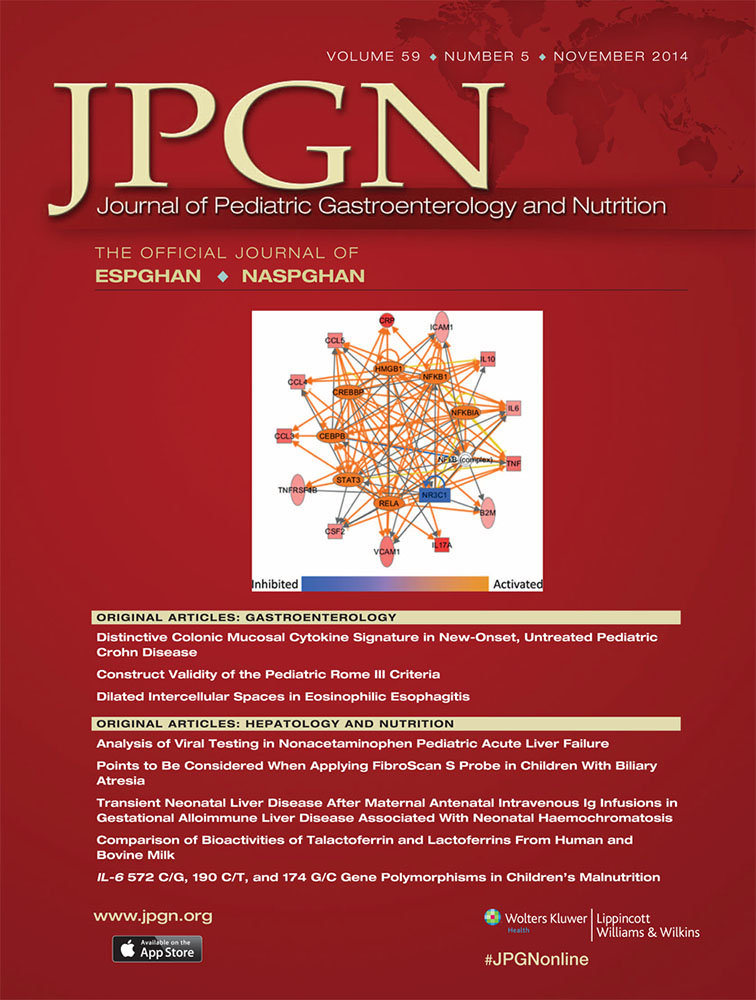IL-6 572 C/G, 190 C/T, and 174 G/C Gene Polymorphisms in Children's Malnutrition
The present work was supported by Internal Research Grants (project number 19/11.12.2013) from the University of Medicine and Pharmacy Târgu Mureş, Romania.
The authors report no conflicts of interest.
ABSTRACT
Objectives:
The aim of the present study was to establish the correlations between the polymorphisms of the genes interleukin-6 (IL-6) 572, 190, and 174 in children's malnutrition.
Methods:
We assessed 283 hospitalized children and divided them into 2 groups: group I (control) included 110 patients with normal nutritional status, median (range) age 10.90 (1–18) years; and group II consisted of 173 malnourished patients, median (range) age 10.70 (1–18) years.
Results:
The 2 groups underwent IL-6 572 cytosine allele (C)/guanine allele (G), 190 C/thymine allele (T), and 174 G/C polymorphism testing, measurement of anthropometric indicators (mid-upper arm circumference and tricipital skinfold thickness [TST]), and paraclinical evaluation (protein, albumin). We observed that the GG and CG genotypes were more frequent in malnourished children for the IL-6 174 gene (P = 0.0001), whereas the CT heterozygous genotype was more frequent in the malnourished group for the IL-6 190 gene (P = 0.003). Body mass index (BMI), middle upper arm circumference (MUAC), TST, and low serum albumin levels correlated with the GG and CG genotypes of the IL-6 572 and IL-6 174 genes, and with the CT genotype of the IL-6 190 gene, in children with malnutrition, whereas the IL-6 190 TT genotype was a protective factor for malnutrition (P = 0.0001).
Conclusions:
Malnutrition is more frequently associated in children with IL-6 174 G allele carriers (GG and CG genotypes), whereas IL-6 190 TT genotype has a protective function. In malnourished children, the IL-6 572/190/174 GG/CT/CG, GG/CT/GG, GG/CC/GG, and GG/CC/CG combined genotypes are more frequent.




